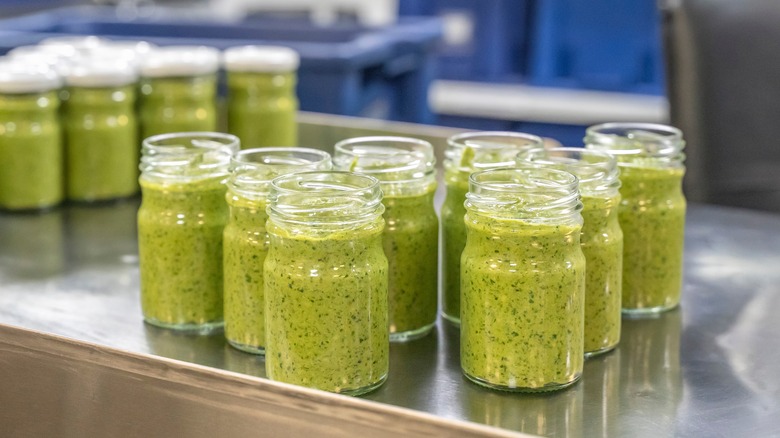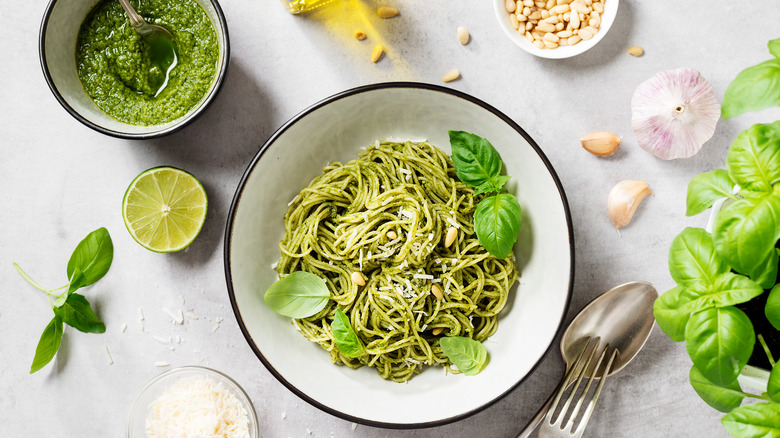How To Thin Out Store-Bought Pesto Without Sacrificing Flavor
Pesto, that ethereal combination of basil, pine nuts, parmigiana cheese, garlic, and olive oil, is a pleasure to eat, but can be a pain to make, requiring much chopping, peeling, and grating. That's to say nothing of those who choose to hammer away with a mortar and pestle the old-fashioned way. So, many turn to jarred pesto, of which there are a great many quality varieties, when they are in a pinch. Store-bought pesto can be a bit one size fits all, and as such can sometimes be a bit thick in consistency. That's all well and good until you need a thinner pesto to use as a pasta sauce, for instance.
The question then arises of how to best attenuate store-bought pesto. Water is the most obvious of choices, but adds nothing in terms of flavor. If you foresee the water added to the pesto cooking off or otherwise being of little consequence, then this is a fine way to make a thick pesto a bit more pliable. However, if you seek to modify jarred pesto without diluting the flavor — or even add a kiss of flavor — then there are several ways to proceed.
There are a couple of elements to keep in mind before you go galivanting off thinning your pesto willy-nilly. One is the inherent flavors of pesto — herbaceous, pungent, rich — and what ingredients will enhance and complement them. The other is what is the final outcome and what ingredients will best serve the dish in total.
Options for a thinner pesto
Being Italian, the most natural choice for something that can best thin out pesto is an ingredient from the Italian culinary canon.
Adding olive oil would be a great way to thin out pesto while not monkeying around too much with the flavor. The liquid component of the pesto to begin with, olive oil adds richness, mouthfeel, and a certain grassiness to the mix. In fact, you may want to seek a higher-end, and thus more flavorful, olive oil for this purpose to boost the natural flavor. Another rich addition to pesto that would transform the sauce entirely is a bit of heavy cream, which would add a luscious layer to the bright flavors of the pesto. It's not hard to imagine a creamy pesto sauce coating fresh pasta.
If, however, you don't want to add more richness to the pesto, but would rather make the flavor more complex with a bit of acid, reach for a touch of vinegar or some lemon juice. These will counteract the olive oil and cheese of the pesto and bring a bite that would make the pesto a perfect addition to a hearty green or cold vegetable salad.
There is no one right way forward to make jarred pesto fit your needs. So long as you bear in mind the flavors of the pesto — mind you, not all pesto is made the same — as well as the end intention, you'll likely come across a delicious solution.

